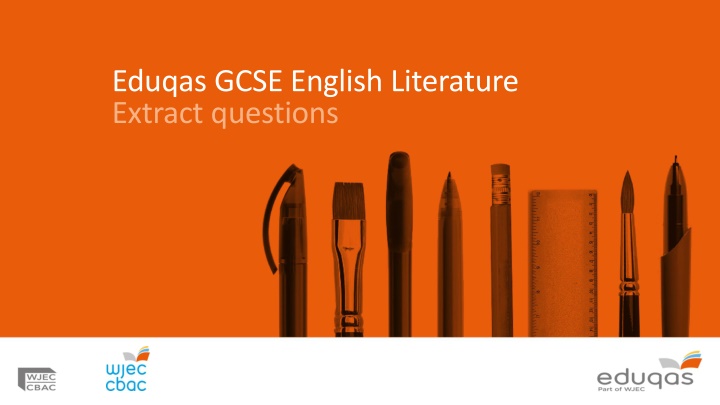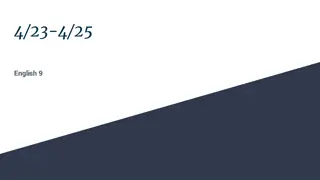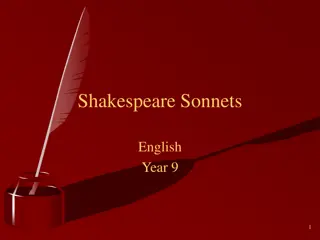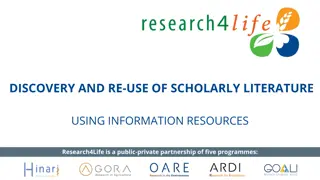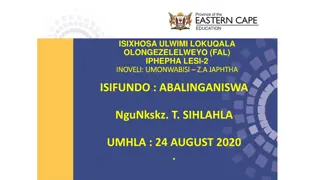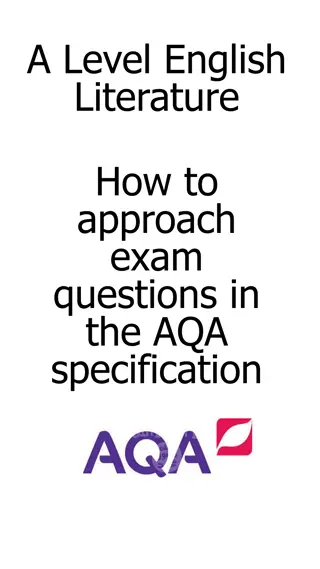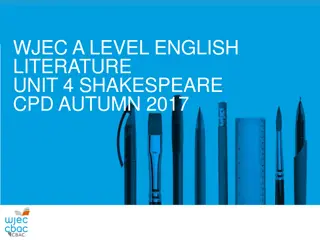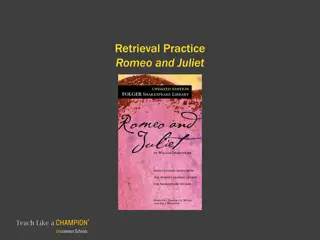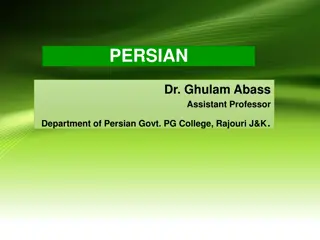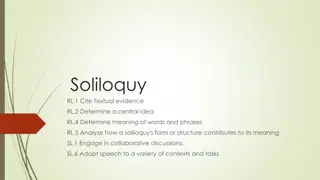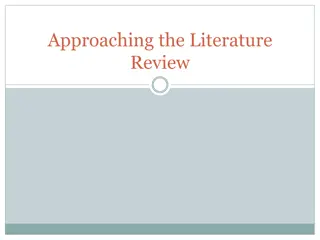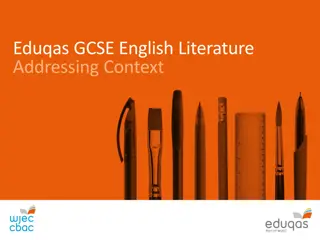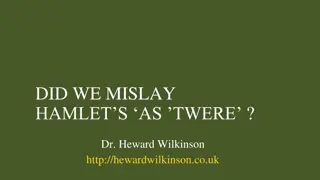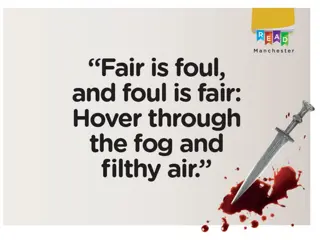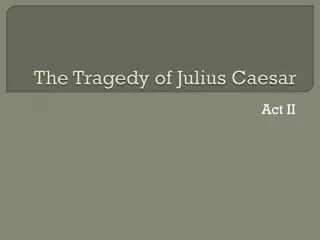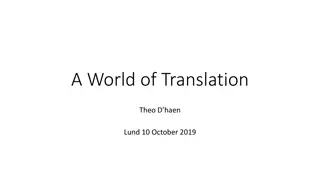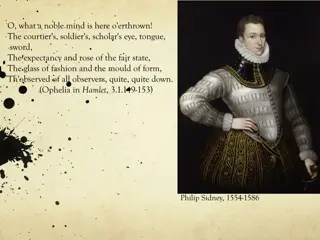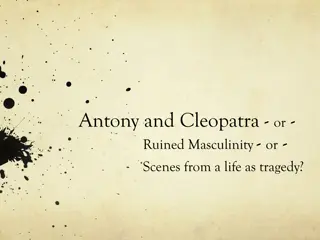Shakespearean Literature
Dive into the world of Shakespearean literature with sample questions and tips for analyzing extracts from plays like "Romeo and Juliet." Get insights on character relationships, themes, and more to enhance your study of English literature.
Download Presentation

Please find below an Image/Link to download the presentation.
The content on the website is provided AS IS for your information and personal use only. It may not be sold, licensed, or shared on other websites without obtaining consent from the author.If you encounter any issues during the download, it is possible that the publisher has removed the file from their server.
You are allowed to download the files provided on this website for personal or commercial use, subject to the condition that they are used lawfully. All files are the property of their respective owners.
The content on the website is provided AS IS for your information and personal use only. It may not be sold, licensed, or shared on other websites without obtaining consent from the author.
E N D
Presentation Transcript
Eduqas GCSE English Literature Extract questions
Sample questions: Component 1 Section A Shakespeare (extract) Read the extract on the opposite page. Then answer the following question: What does the extract show an audience about Juliet s thoughts and feelings at this point in the play? Refer closely to details from the extract to support your answer. [15] (The given extract is Juliet s soliloquy in which she is worried about carrying out the plan to fake her own death)
Approaching the Shakespeare extract questions Read the question TWICE to identify the key focus. Read the extract carefully before starting to write, highlighting key pieces of evidence to suit the question focus. Don t start writing and going through the extract at the same time. Start your answer by referring to where this extract happens and its significance (this does not have to be an exact Act Scene location). Track the whole extract and make sure there is evidence from the whole piece. Be aware of whether the extract is a soliloquy or an interaction between two or more characters: if it is a soliloquy, you will be tracking the thoughts, feelings and emotions of the individual. Look for changes in mood, atmosphere, relationships across the piece. Make sure that the text is seen as drama and that there is reference to the audience. AO2 should be focused on the language used for drama texts and on Shakespeare s rich uses of imagery. Context is not assessed here. Any contextual references should be brief and only used when they can support AO1
Sample questions: Component 2 Section A: Post-1914 Prose/Drama (source based question) Lord of the Flies You are advised to spend about 45 minutes on this question. You should use the extract below and your knowledge of the whole novel to answer this question. Write about the relationship between Ralph and Jack and how it is presented at different points in the novel. In your response you should: refer to the extract and the novel as a whole show your understanding of characters and events in the novel [40] (followed by an extract of about half a page)
Sample questions: Component 2 Section B: 19th Century Prose (source based question) The Strange Case of Dr Jekyll and Mr Hyde You are advised to spend about 45 minutes on this question. You should use the extract below and your knowledge of the whole novel to answer this question. Write about Dr Jekyll and how he is presented at different points in the novel. In your response you should: refer to the extract and the novel as a whole show your understanding of characters and events in the novel refer to the contexts of the novel [40] (followed by an extract of about half a page)
Approaching the source based questions As you will see, these questions work in the same way. The only difference is that Section B (19th Century Prose) includes AO3 (context) as an Assessment Objective. Read the question carefully TWICE to identify the key focus. The focus of these questions is on the whole text. The extract is to enable a way in and to provide material for AO2. A brief plan should focus on the whole text and include the beginning, key moments and endings of the texts. The extract can be discussed where it best fits (in terms of the chronology of the text). Other approaches include covering the extract first before moving on to the whole text or integrating evidence from the extract throughout the essay on the whole text. All of these approaches are valid. The most important thing is that students spend less time on the source and more time on the whole text.
Approaching the source based questions The texts should be seen as their respective genres and relevant terminology should include terms related to that genre. As the focus of these questions is on whole text study, terminology is more about elements of the bigger picture of how texts create meaning rather than close analysis of individual words (and their word class labels) As before, Students should use quotations explicitly for AO2 as well as to illustrate a key aspect of the question focus. Spelling, punctuation and grammar is assessed in Section A. Proof read, paying attention to spellings of names.
Approaching the source based questions (context) Context IS NOT assessed in the post-1914 text. While it may be relevant to some of the texts in this section, and may help discussion of A01, it should not be a main focus of the response. Context IS assessed in the 19th Century text. It should be mentioned in the introduction and integrated throughout the response where it supports discussion of meanings/ideas/character development or AO2. The development of characters/themes/ideas in relation to the question should drive the response. Context should be used as a supporting reference rather than to drive responses.
